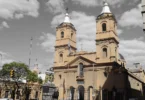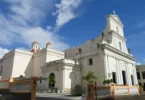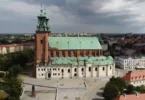Introduction
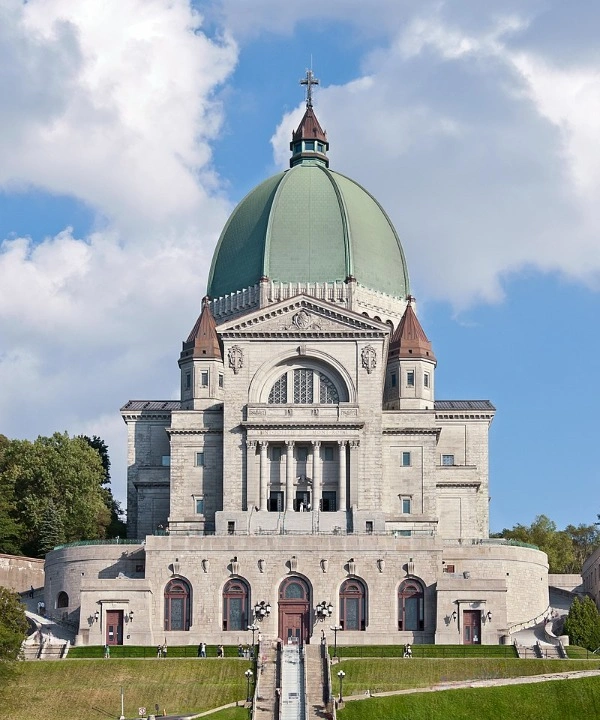
Saint Joseph’s Oratory of Mount Royal (French: Oratoire Saint-Joseph-du-Mont-Royal) is a Roman Catholic minor basilica and national shrine located at 3800 Queen Mary Road in the Côte-des-Neiges neighborhood on Mount Royal’s Westmount Summit in Montreal, Quebec. It is a National Historic Site of Canada and is Canada’s largest church, with one of the largest church domes in the world. Founded in 1904 by Saint André Bessette in honour of his patron saint, Saint Joseph, the Oratory is the product of numerous architects and thousands of workers in a process spanning six decades. With its monumental scale, Renaissance Revival facade and contrasting Art Deco interior, the Oratory is recognizable not just in Montreal but around the world, attracting more than 2 million visitors and pilgrims to its steps each year. The Oratory is the highest building in Montreal, rising more than 30 metres above Mount Royal’s summit, allowing it to be seen from many kilometres away. It is the only building that violates the height restriction under the municipal building code of Montreal, which limits the height of any building, including skyscrapers, from surpassing the height of Mount Royal. Since 2018, the dome and lantern atop the Oratory have undergone a series of renovations expected to be completed in 2024 by architecture firms Atelier TAG and Architecture49. The C$80 million project will create safe access to the lantern which will allow for an unprecedented 360-degree view over the mountain of the city.
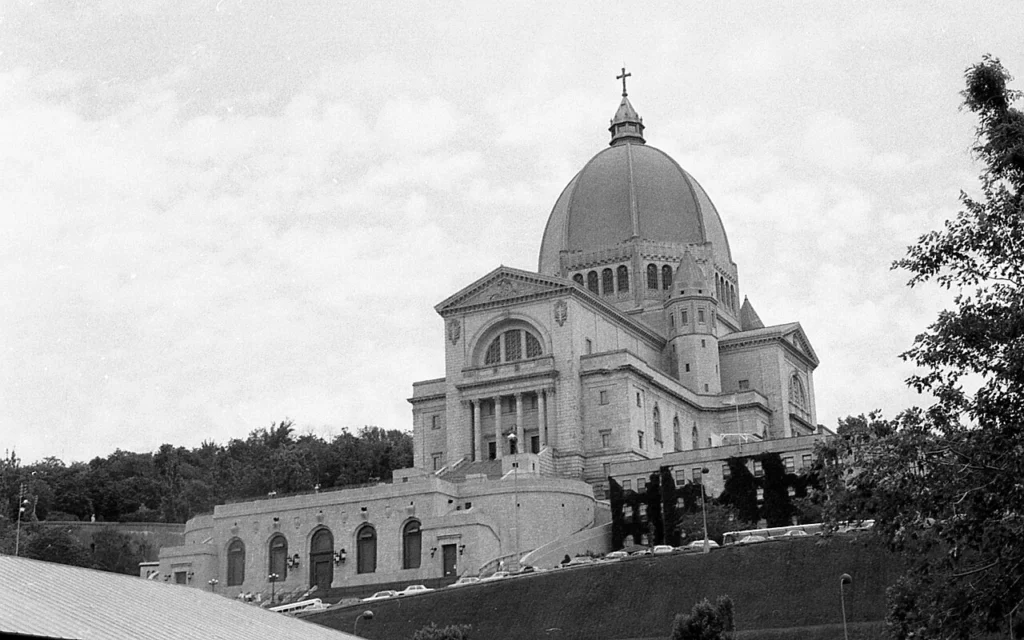
Early history
Saint André Bessette, C.S.C. (1845–1937), more commonly known as Brother André, was a monk and a member of the Congregation of Holy Cross who became internationally renowned as a miracle healer. In 1904, he received funding to build a small chapel on Mount Royal, across from Notre Dame College, to serve as his office because of his fame. The Congregation made the decision to fulfill Brother André’s request to construct a basilica in the honor of his patron saint, Saint Joseph, as the small Gothic Revival-style chapel grew four times over the following ten years due to the growing fame of the Brother André. Although it has since been moved about 100 meters away to make room for the massive basilica that now stands, the original chapel, which was 4.5 meters by 5.5 meters in size, is still visible today. Dalbé Viau (1881–1938) and Alphonse Venne (1875–1934), two architects who had previously worked for the Congregation, were involved in the basilica’s first phase of construction. From 1914 to 1916, Viau and Venne constructed the crypt church, with seating for 1000, which still stands today and forms the base of the basilica where the massive collection of stairs ends. Between 1924 and 1927, the crypt and building up until the roof were completed in the Renaissance Revival style. The Oratory’s dome had been designed to resemble that of St. Peter’s Basilica in Rome, and to be smaller than it actually is today; however, they never had the chance to see those plans through as construction was halted with the Great Depression.
After the Great Depression
In 1937, Dom Paul Bellot (1876–1944), born in France, was hired to work after the death of Venne; however, he was required to work through Canadian Lucien Parent (1893–1956) due to not being a registered architect in Quebec. He completely redesigned the roof and dome of Viau and Venne, making the dome much larger and modeling it to look like the dome of Florence Cathedral. The construction of his large Oratory dome lasted four years and was completed in 1941 after involving thousands of workers. From 1949 to 1951, architect Gilbert Moreau carried out alterations and improvements to the interior of Saint Joseph’s Oratory, as well as to the adjacent monastery, and rearranged the sacristy in the basilica. From 1955 to 1975, composer Émilien Allard served as the church’s carillonneur. For RCA Victor he released the LP album Carols at the Carillon of Saint Joseph’s Oratory for which he wrote the arrangements.
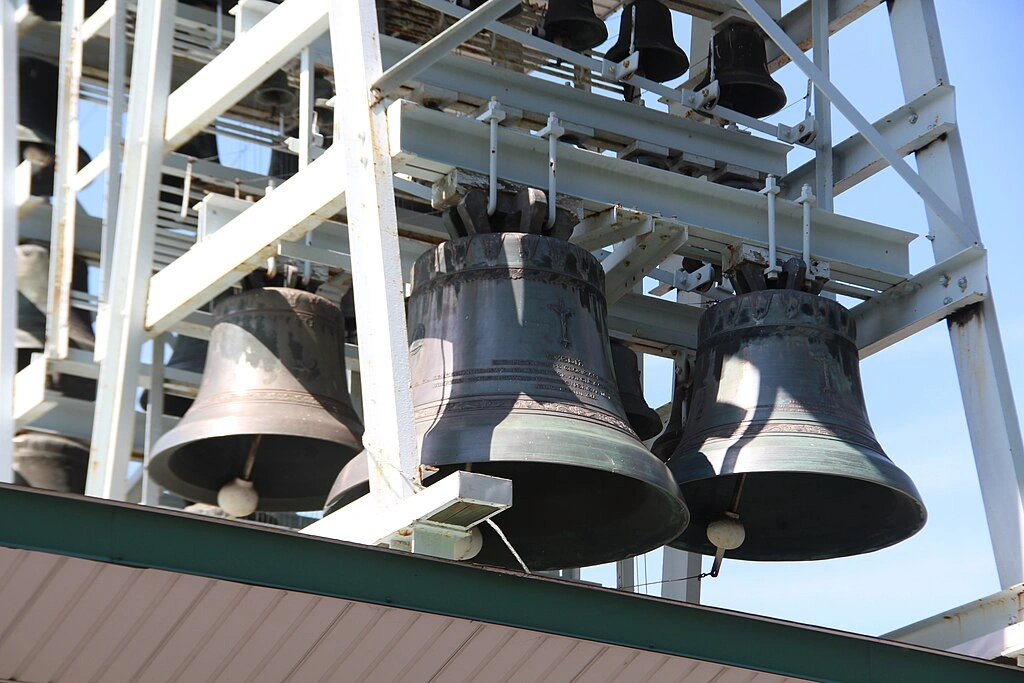
21st century
On October 19, 2004, the Oratory held its centennial. All the bells of all the churches on the island of Montreal were supposed to ring at 9:00 a.m., though not all churches participated. The basilica responded by ringing its bell at 9:05 in celebration. “Saint Joseph’s Oratory, Quebec” was included in the 2004 Tourist Attractions series by Canada Post on April 2, once more as a way to celebrate the Oratory’s centennial. The stamp was designed by Catharine Bradbury & William Stewart based on a photograph by Bernard Brault. The 49¢ stamps are perforated kiss cut and were printed by Lowe-Martin Company Inc. That same year, the Oratory was designated a National Historic Site of Canada. Father Charles Corso, a priest at the Oratory, was confronted on October 30, 2007, by a man who was disorganized and depressed and had threatened to kill himself with a handgun.Prior to the arrival of the police, the man was calmed down by the priest’s conversation with him. The man was brought to hospital to undergo psychiatric evaluation. On March 22, 2019, a 26-year-old man wearing a dark winter coat and light-coloured baseball cap entered the Oratory during the Friday morning mass, rapidly walked up to the centre, and stabbed the celebrating priest, Father Claude Grou. Several of the fifty people attending mass intervened to stop the attacker before security arrived. The assailant, who was already being held by security personnel, was quickly apprehended by officers from the Service de police de la Ville de Montréal. The assaulted priest suffered only minor injuries, a single stab wound to the chest.That same evening, upon being wheeled out of the Montreal General Hospital, he said, “My health is fine. I’ll take a little rest and I will be back to work when my rest is taken. Additionally, the Oratory will continue to be a welcoming location. A place of prayers, and a place of calm, and a place of peace – even if there are some moments like that. In 2018, the architectural firms Atelier TAG and Architecture49 won a competition organized by Saint Joseph’s Oratory[18] to renovate the inside of its dome and its observatory. The project is estimated to cost around $80 million CAD and will also include a complete renovation of the building’s museum and the construction of a new welcome centre on Queen Mary road. The lantern will have space for up to 17 visitors at a time and will offer the only 360-degree view over the mountain in the city. As of early 2024, renovations are underway. A revered statue of Saint Joseph can be found inside the oil-burning chapel, where Pope Pius X authorized a canonical coronation on March 19, 1910, through Cardinal Vincenzo Vannutelli. This statue was previously enshrined at the Côte-des-Neiges Chapel and has been moved to the new modern basilica. The same image was ceremonially crowned for the second time on 9 August 1955 by Pope Pius XII via Cardinal Paul-Émile Léger.
Architecture of Basilica of St. Joseph of Mount Royal, Montreal, Canada

Architects: Paul Bellot, Alphonse Venne, Dalbé Viau, Lucien Parent.
Architectural style: Renaissance architecture, Italian Renaissance.
Architecture and structure
Numerous architects were challenging the conventional Beaux-Arts style and neoclassicism when construction of the basilica began in 1914. Expressionist architecture, constructivist architecture, Bauhaus ideas, and many other aspects of modern architecture started to take off during this time period, with pioneers like Le Corbusier in Europe and Frank Lloyd Wright in the United States refusing to be classified as traditional architects. Saint Joseph’s Oratory was one of the largest buildings in Montreal when it was built. It had a Renaissance Revival exterior and an Art Deco interior, which was certainly unusual for monumental classical church buildings built in cities at this time. The Crypt Church, which is underneath the basilica, the Votive Chapel, which is between the Crypt and Mount Royal’s rock, the Shrine, which includes the nave, apse, and transept, and the dome, which is the largest church dome in Canada and the third largest in the world, make up the basilica as it currently stands. During the summer solstice, the setting sun is perfectly aligned with the center line of the main steps that lead up to (and into) the basilica. People gather on the steps at that time of year to watch the sunset. On the longest day of the year, the cross on the altar and the main aisle inside the basilica are also perfectly aligned with the setting sun. Sunlight enters the basilica through some windows and doors. On the day of the total solar eclipse, Monday April 8, 2024, the steps and surrounding areas were filled to capacity with people there to experience the eclipse. Totality occurred at 3:26pm for about 85 seconds. It was about 15C outside. Although the eastern sky was clear, cirrus clouds obscured some of the eclipse’s effects in the southwest, where the sun was. However, the planets Venus and Jupiter, the diamond ring effects, and the corona with prominences were all visible to the naked eye. The spectators cheered and applauded as totality started. After totality some people sang “You Are My Sunshine”. The cirrus clouds produced a sun-rainbow halo, and a jet that flew across the halo produced a contrail with a contrail shadow. The snowstorm that occurred five days earlier had melted most of the snow.

Crypt Church
The Crypt Church, originally designed by Viau and Venne, measures 63.39 by 36.5 by 13.1 m (208.0 by 119.8 by 43.0 ft), has a seating capacity of 1000 people and is designed in a neoclassical style. The barrel vaulting of steel-reinforced concrete arches supports the ceiling. Due to its position embedded in the mountain beneath the basilica and its flattened arches, the church is referred to as a “crypt.” 3] There is a statue of Joseph made out of Carrara marble behind the main altar of the Crypt Church, added in 1917 by the Italian artist A. Giacomini. Eight stained glass windows depicting the stages in Saint Joseph’s life were installed in the crypt in 1919 by the Montreal firm Perdriau et O’Shea.
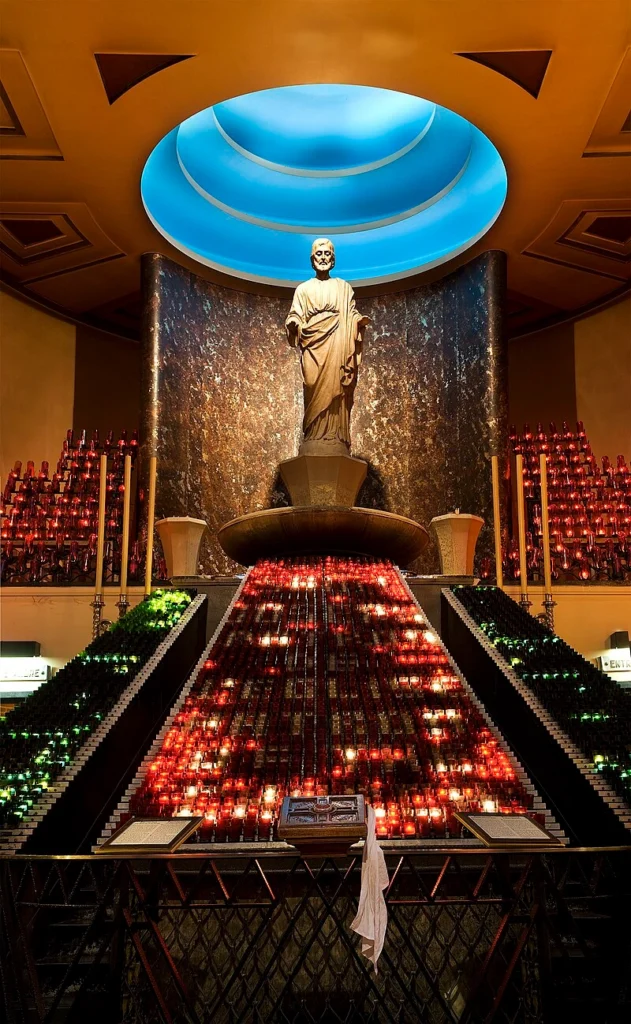
Votive Chapel
Added between 1946 and 1949 between the Crypt Church and the rock of Mount Royal, the Votive Chapel is designed in Art Deco style from the plans of Lucien Parent, and relies on heavy use of geometric forms (square columns, square paneling on ceiling). The Chapel measures 31.69 by 15.2 by 27.43 m (104.0 by 49.9 by 90.0 ft) and contains approximately 10,000 candles, with the central lampstand in front of the statue of Saint Joseph holding approximately 3500 votive candles. The chapel, also referred to as “the Chapel of Ex-votos,” has nearly 1000 ex-votos (canes, crutches, etc.) suspended within it, left behind by pilgrims during the life of Brother André. The chapel also contains eight bas-reliefs designed by Canadian sculptor, Joseph Guardo in 1948, which illustrate eight of the attributes which Christianity has accorded to Saint Joseph. The tomb of Saint André, sculpted in black marble, rests in an alcove in the middle of the Votive Chapel.
Shrine
The interior of the basilica, known as the Shrine, was designed using concepts by Dom Bellot as well as Canadian architect Gérard Notebaert, and uses a Latin cross layout with a dome at the crossing. The interior has an overall length of 105 m (344 ft). The nave, which contains pews to seat 2028 people (with a maximum capacity of 10,000 people), measures 37 m (121 ft) in width, while the transept measures 65 metres (213 ft) and connects to the shrine of Brother André. The rest of the interior, including the apse, is designed in the Art Deco style, which was very popular in Montreal in the 1930s. It features religious-themed sculptures, bas-reliefs, mosaics, and stained glass. The roof of the basilica is held up using reinforced concrete multi-angle arches iconic of Dom Bellot’s style. The exterior of the Oratory is constructed using large blocks of granite from Lac Mégantic quarries in Quebec. The colonnade at the front façade of the building consists of four 18 m (59 ft)-tall, 1.5 m (4 ft 11 in)-thick Corinthian columns which provide the structural support for the entablature of the front portico. Additionally, it has an ornamental cornice. The staircase which leads from the street to the base of the basilica contain two parallel flights of 283 concrete steps separated by a central flight of 99 wooden steps reserved for pilgrims who wish to climb on their knees.
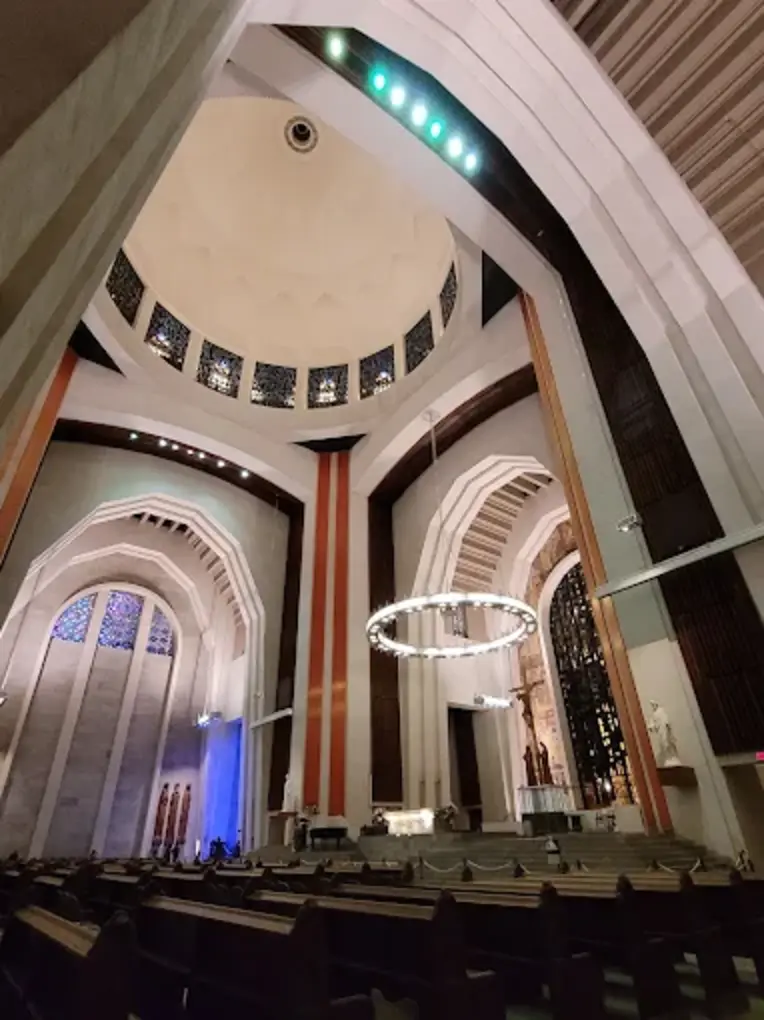
Dome
The dome of Saint Joseph’s Oratory is the largest church dome in Canada and among the largest and the tallest domes in the world, and this is a result of Dom Bellot’s very inspired and ambitious designs. His plans for the dome are very similar to those of Florence Cathedral. They are a “double shell” design, which means that it will have two domes, one on the inside and one on the outside, with no space between them. Like the cathedral in Florence, the outer dome of the Oratory consists of eight pointed arches laying atop an octagonal drum, with a lantern and cross. The outer dome of the Oratory measures only 17.78 cm (7.00 in) in thickness and the inner dome measures only about 12.7 cm (5.0 in) in thickness, which is approximately 18 times thinner than the dome of St. Peter’s Basilica in Rome. In point of fact, the Oratory’s dome’s concrete shell is so thin in comparison to its overall size that it resembles an eggshell. The two domes vary immensely in span and height, with the outer dome measuring 39 m (128 ft) in diameter and rising 97 m (318 ft) from the nave floor, and the inner dome measuring 26 m (85 ft) in diameter and rising 60 m (200 ft) from the nave floor. There are 16 steel buttresses along the inner walls of the drums that provide the structural support for the dome. They serve to brace the inner dome against the outer dome, thus making the supporting walls for both domes more rigid.
Feast Day
Feast Day : 19 March
The Basilica of Saint Joseph of Mount Royal in Montreal, Canada, celebrates its feast day on March 19, known as the Feast of Saint Joseph. This day honors Saint Joseph, the foster father of Jesus and patron of the Universal Church. At the Oratory, it marks the end of a nine-day novena filled with special prayers and Masses, drawing thousands of pilgrims each year to celebrate this important spiritual event.
Church Mass Timing
Monday to Saturday : 7:00 AM, 8:30 AM, 10:00 AM, 11:30 AM, 12:15 PM, 4:30 PM, 7:30 PM.
Wednesday : 7:00 AM, 8:30 AM, 10:00 AM, 11:30 AM, 12:15 PM, 2:00 PM, 4:30 PM, 7:30 PM.
Sunday : 8:00 AM , 10:30 AM , 5:00 PM.
Church Opening Time:
Monday to Sunday : 6:30 AM, 9:00 PM.
Contact Info
Address : Saint Joseph’s Oratory of Mount Royal
3800 Queen Mary Rd, Montreal, Quebec H3Y 1N5, Canada
Phone : +1 514-733-8211
Accommodations
Connectivities
Airway
Basilica of St. Joseph of Mount Royal, Montreal, Canada to Elliott Trudeau International Airport, distance between 29m (17.2 km) via Autoroute 20 O.
Railway
Basilica of St. Joseph of Mount Royal, Montreal, Canada, to Gare Centrale (Central Station), distance between 16m (5.7 km) via Chem. de la Côte-des-Neiges.


